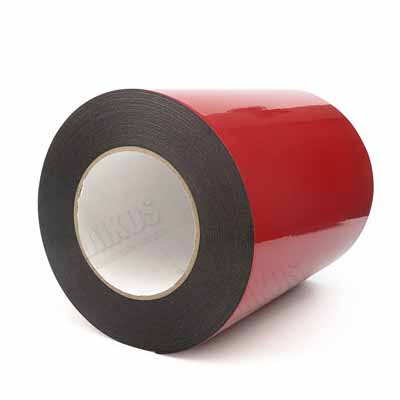Thermal tape, also known as thermally conductive adhesive tape, is a thermally conductive bonding material that is widely used in electronic devices, power supplies, LED lighting, and automotive electronics. It is a double-sided tape that features a strong adhesive on one side and a thermally conductive material on the other. The purpose of thermal tape is to transfer heat from a heat-generating device to a heat sink or another surface where it can be dissipated. This article aims to provide a comprehensive understanding of thermal tape, its types, properties, applications, and advantages.
Thermal tape comes in different types based on its thermally conductive material, adhesive strength, and backing material. Here are the three most common types of thermal tape.
1. Acrylic-based Thermal Tape: This type of thermal tape uses an acrylic adhesive and provides excellent bonding strength, dielectric strength, and resistance to harsh environmental conditions. It is suitable for use with a wide range of materials, including metals, plastics, and ceramics.
2. Silicone-based Thermal Tape: This type of thermal tape uses a silicone adhesive that can withstand high temperatures and offers excellent electrical insulation and thermal conductivity. It is commonly used in the manufacture of LED lighting, power supplies, and other electronic components.
3. Polyimide-based Thermal Tape: This type of thermal tape uses a polyimide backing material and provides exceptional mechanical strength, chemical resistance, and thermal stability. It is suitable for use in high-temperature applications, such as semiconductor processing, aerospace, and defense.
The thermal tape has several properties that make it suitable for various applications. Here are some of the essential properties of thermal tape.
1. Thermally Conductive: Thermal tape is designed to transfer heat from the heat source to a heat sink or another surface. It has a high thermal conductivity that allows it to transfer heat efficiently.
2. Adhesive: Thermal tape has a strong adhesive that provides excellent bonding strength and can withstand harsh environmental conditions such as humidity, moisture, and extreme temperatures.
Thermal tape is used in various industries, including electronics, automotive, aerospace, and defense. Here are some of the specific applications of thermal tape.
1. LED Lighting: Thermal tape is used to bond the LED chips to the heat sink to dissipate heat generated during operation.
2. Power Supplies: Thermal tape is used to bond power semiconductors to heat sinks to reduce thermal resistance, improve heat dissipation, and increase longevity.
3. Automotive Electronics: Thermal tape is used to bond electronic components to heat sinks and other surfaces to prevent overheating and improve reliability.
Thermal tape offers several advantages over traditional thermal interface materials such as thermal grease and thermal pads. Here are some of the advantages of thermal tape.
1. Easy to Apply: Thermal tape is simple to use and requires no special skills or tools to apply.
2. High Thermal Conductivity: Thermal tape has a high thermal conductivity that improves heat transfer and reduces the risk of component failure due to overheating.
3. Durable: Most thermal tapes are resistant to harsh environmental conditions, making them suitable for use in various applications.
Thermal tape is an essential component in many electronic devices, power supplies, and automotive electronics. It provides efficient heat transfer, excellent bonding strength, and electrically insulating properties. This article provides an overview of thermal tape, including its types, properties, applications, and advantages. With its excellent performance and ease of use, thermal tape continues to be a popular choice for thermal management in a wide range of industries.




